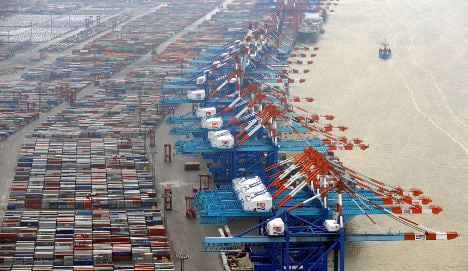And although the pace of export growth slowed slightly compared to the month before, analysts said that exports would continue to be an important driver in Germany, the world’s second largest exporter, in the second half of the year.
Exports rose by 18.7 percent compared to July 2009, the national statistics office said in a statement, with a total of €83 billion of goods exported.
Imports also rose sharply, registering a 24.9-percent gain on the previous year with €69.5 billion of goods brought into the country.
Germany’s trade surplus of €13.5 billion was slightly lower than at the same time in 2009 but a fraction higher than the €13.1 billion economists at Dow Jones Newswires had forecast.
In June, exports soared by 28.4 percent compared to the previous year. The absolute value of goods exported (€86.4 billion) was the highest monthly value since October 2008, the statistics office said.
Compared to this month, exports declined by 1.5 percent in July and imports by 2.2 percent.
Carsten Brzeski said exports were bound to slow after the stellar performance in June but this did not presage a decline.
“All in all, after the strong surge in the second quarter, German exports are now normalising,” the analyst said.
“However, normalising does not mean stagnation. Even at a slower pace, the export sector should remain an important growth driver.”
A breakdown of the export figures showed that other European Union countries snapped up €48.6 billion worth of German goods, with €34.4 billion going to third countries.
With the economic climate in the country improving significantly, the German federation of exporters (BGA) on Tuesday doubled its forecast for exports in 2010 to growth of around 10 percent.
“Firms have shaken off their state of shock caused by the economic collapse in the previous year,” said BGA chief Anton Börner.
Germany experienced its worst recession in more than six decades last year, but has bounced back strongly, predominantly on the back of improved global demand for its exports.
Europe’s economic powerhouse registered sizzling growth figures of 2.2 percent in the second three months of the year and is expected to achieve output over the year of around three percent.



 Please whitelist us to continue reading.
Please whitelist us to continue reading.
Member comments